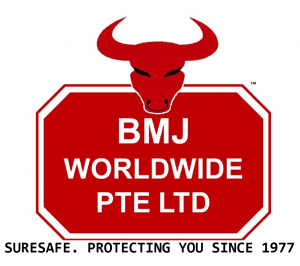Safety is a primary concern in any industrial environment for both employees and a company. There are four types of workplace hazards which may endanger you or a fellow worker. These hazards include:
- Physical hazards, such as frayed cords, ladder work, spills, exposed moving parts and even constant loud noise.
- Chemical hazards, whether they’re liquid, gas or solid. Gasoline, flammable materials, carbon monoxide, fumes and solvents are common chemical hazards on the job.
- Biological hazards, such as blood, bacteria and animal droppings.
- Ergonomic hazards, which occur if you’re forced to work in a position that causes a great deal of strain. This includes jobs that require frequent lifting or working in poor lighting conditions.
Along with proper training, policies and labeling, safety equipment is the best way to avoid workplace injury. According to the Bureau of Labor Statistics, there were 118 cases per 10,000 workers of severe occupational injury or illness in 2010 with a total of 3.5 cases of non-fatal occupational injury per 100 workers. There were also 4,547 fatal work injuries in 2010. Fortunately, safety equipment used on the job can prevent a large percentage of work-related injuries.
THE MOST IMPORTANT SAFETY EQUIPMENT
So what equipment is necessary? It depends on the job, although gloves, safety glasses, harnesses, ear plugs, hard hats, protective clothing and face masks are basic necessities. Here’s how each is designed to protect you while you work.
- Protective clothing is made from material that offers protection against chemical splashes, asbestos, grease and even open flames. This sort of clothing is designed for auto workers, construction workers, chemists and any other career that exposes you to potential hazards.
- Body harnesses are a form of fall protection, an important lifeline for construction workers.
- Respirators should comply with OSHA standards and may be either air-purifying to force contaminated air through a filter or air-supplying, which supplies a fresh outside air. There are also disposable face masks that may be oil resistant or oil proof.
- Work gloves are designed to protect you from both absorbing harmful substances through your skin and sustaining a hand injury. Types of work gloves include industrial work gloves, rubber gloves for handling chemicals or dry applications, and Kevlar gloves for construction and protection from abrasions.
- Hearing protection is important if you’re exposed to constant loud noise. Foam or memory foam protection is often used by industrial workers, while amplifying ear protection is best when you need to hear voices yet muffle loud noises.
- Safety glasses are designed to give you a barrier between your eyes and dangerous debris or infectious material. There are many types of eye protection, including glasses, goggles, face shields and visors, depending on the type of conditions you’re working in. When choosing eye protection, make sure you maintain good peripheral vision and a secure fit.
Finally, hard hats are recommended by OSHA for anyone exposed to falling debris, burns, electrical shock, or bumps on the job. Hard hats come in various grades for the type of penetration and impact they can sustain, while some are insulated to protect against electrical hazards.

